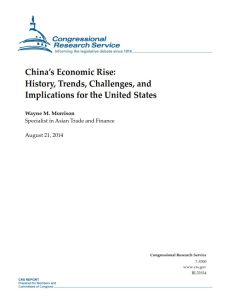Únase a getAbstract para acceder al resumen.

Únase a getAbstract para acceder al resumen.
Wayne M. Morrison
China’s Economic Rise
History, Trends, Challenges, and Implications for the United States
Congressional Research Service, 2014
¿De qué se trata?
Understanding China is the key to understanding modern geopolitics and economics.
Recommendation
Any credible reading of the geopolitical terrain requires a fundamental understanding of China’s long-run dynamics. This report from Wayne M. Morrison of the US Congressional Research Service takes a wide-angle lens to China’s economy, its industrial policies, and its dependence on fixed investment and exports. Readers should note that humanitarian issues fall outside the scope of the report, although it addresses some political and social considerations and their impact on China’s economic well-being. For instance, China’s comparatively weak rule of law undermines property rights, contract rules and the fair allocation of credit. Moreover, a dearth of state-provided social benefits compels citizens to save rather than to consume. However, the report is careful to avoid editorializing and, instead, lets the data tell most of the story. getAbstract recommends this informative read to executives, policy makers and economists who want a research-based overview of China’s economy and its future.
Summary
About the Author
Wayne M. Morrison covers Asian trade and finance at the Congressional Research Service.

















Comment on this summary